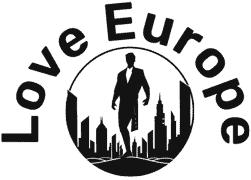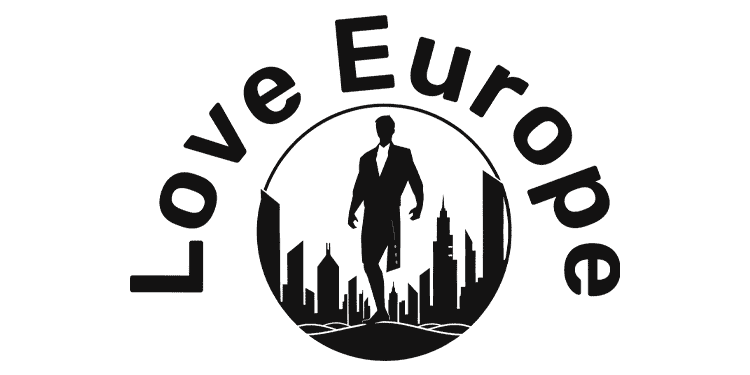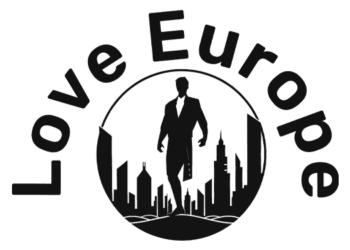France’s Emissions Decline: an Overview of the 2024 Developments
The most recent information signifies that France’s greenhouse gasoline emissions decreased in 2024, albeit at a extra modest charge in comparison with earlier years. This decline has largely been attributed to a stagnation within the transport sector, the place emissions reductions haven’t saved tempo with targets. A number of elements have contributed to this pattern,together with:
Elevated reliance on highway transport: A notable shift in transportation habits has led to extra private car use,undermining efforts to advertise public transit and different technique of transport.Financial restoration post-COVID: The rebound in financial exercise has resulted in increased vitality consumption throughout varied sectors,impacting general emissions.Technological transitions: Whereas some industries have made strides in direction of sustainable practices, others lag behind, particularly in adapting to greener applied sciences.
The federal government is conscious of these challenges and is actively revising its methods to be sure that long-term emissions targets are met. coverage measures aimed at stimulating public transport utilization and incentivizing electrical car adoption are anticipated. Moreover, a cross-sector collaboration involving business stakeholders could yield extra sturdy outcomes. An examination of emissions by sector reveals various impacts:
Sector2023 Emissions (in MtCO2e)2024 Emissions (in MtCO2e)Change (%)Transport110112+1.8Industry9590-5.3Residential4542-6.7Agriculture3028-6.7
Affect of the Transport Sector on Total Emission Ranges
The transport sector is a significant participant within the general emission panorama,contributing to a important share of greenhouse gasoline outputs.In France, the gradual tempo of emissions discount in 2024 can largely be attributed to challenges confronted inside this sector. Key elements embrace:
Elevated Logistics Demand: An increase in e-commerce and freight transportation has led to increased emissions from vehicles and cargo autos.Gas Varieties: Heavy reliance on fossil fuels,notably diesel,continues to hinder progress in emission reductions.Infrastructure Challenges: Inadequate funding in sustainable transport infrastructure limits the transition to greener options.
Whereas insurance policies aimed toward lowering emissions from transportation have been put in place, their effectiveness has been restricted. The shift in direction of electrical autos is gaining momentum; nonetheless, the transition stays gradual. Current information displays this wrestle:
YearTransport Emissions (Million Tonnes CO2)Proportion Change2022120-3percent2023116-3.3percent2024115-0.9%
Evaluation of Coverage Effectiveness in Emission Discount Efforts
In 2024, France’s progress in emission reductions has grow to be a focus of debate, notably resulting from the slower tempo attributed to challenges within the transport sector. Transport emissions, wich account for a major share of France’s complete greenhouse gasoline emissions, haven’t seen the anticipated deceleration. The lag is primarily resulting from a mix of things, together with elevated car utilization, inefficient public transportation choices, and delayed implementation of cleaner applied sciences. As the federal government strives to fulfill its formidable local weather objectives, these setbacks in the transport area underscore the necessity for a radical evaluate of current insurance policies to improve their effectiveness.
To quantitatively assess the affect of present insurance policies,a comparative overview of emission discount metrics reveals key areas requiring intervention. These embrace:
Funding in Public Transport: Increasing and modernizing public transportation companies can alleviate pressures on highway visitors.Incentives for Electrical Autos: Strengthening subsidies for electrical car adoption could spur faster transitions away from fossil fuel-dependent transportation.Infrastructure Improvement: Enhancing biking and strolling infrastructure encourages sustainable modes of transport.Emission Source2024 Emissions (MT CO2)Change from 2023 (%)Transport120-2Residential80-5Industry150-3
This information illustrates that whereas emissions in sectors like residential and business have proven extra important reductions, transport stays a cussed problem. Addressing these points is essential for France to regain momentum in direction of its environmental targets and guarantee sustainable city mobility.
The Function of Electrical Autos in Shaping France’s Emission Future
The combination of electrical autos (EVs) into France’s transportation panorama is essential for reaching important reductions in greenhouse gasoline emissions. With the nation dedicated to the European Union’s local weather objectives, the shift in direction of electrification is seen as a viable answer to decrease transport-related emissions. By emphasizing the adoption of EVs, France goals to create a cleaner city atmosphere, ease air air pollution, and meet stringent CO2 targets set for the coming many years. The advantages of EVs prolong past simply emissions; in addition they current alternatives for technological innovation, job creation, and vitality independence.
Regardless of the gradual tempo of emissions reductions in 2024, the growing availability of electrical charging infrastructure and authorities incentives is anticipated to spur shopper adoption of EVs. Key elements influencing this transition embrace:
Authorities initiatives: Insurance policies aimed toward selling renewable vitality and enhancing EV charging networks.Public consciousness: Elevated shopper information concerning the environmental advantages of EVs and complete value of possession.Technological developments: Enhancements in battery know-how resulting in longer ranges and sooner charging occasions.
Wanting on the future, it is obvious that the function of electrical autos will be pivotal in shaping France’s emission panorama. A transition to a predominantly electrical fleet may result in substantial development in nationwide emission targets. the desk beneath summarizes the projected affect of EV adoption in France by 2030:
YearProjected EV Adoption RateEstimated Emission Discount (%)202520percent10percent202840percent25percent203060percent40%
Challenges in Transitioning to Sustainable Transport Options
The shift in direction of sustainable transport options presents a mess of obstacles that hinder progress in lowering emissions via this sector. One important problem is the infrastructure inadequacy, which limits the effectiveness of electrical autos (evs) and public transport options. Many areas nonetheless lack an intensive community of charging stations, making it much less possible for customers to transition away from conventional gasoline sources. Moreover, the situation of current infrastructure typically doesn’t promote the usage of greener transportation choices. Different challenges embrace:
Excessive Preliminary Prices: Whereas EV costs have been declining, they nonetheless typically stay increased than conventional autos, deterring potential consumers.Public Resistance: Altering long-standing habits isn’t any simple feat; many customers could also be reluctant to undertake new transportation strategies resulting from issues about efficiency, reliability, and comfort.Coverage Gaps: Inadequate authorities incentives and insurance policies can decelerate the transition as stakeholders lack motivation to spend money on sustainable choices.
one other important space of concern is the feasibility of other fuels, reminiscent of hydrogen and biofuels, which face their very own set of challenges. The manufacturing and distribution of those fuels stay advanced and dear, requiring important funding and technological development. Moreover, shopper acceptance and understanding of those options are important for achieved adoption. A current report highlights the next obstacles:
Various Gas SourceChallengeHydrogenHigh manufacturing prices and restricted availability.BiofuelsCompeting with meals manufacturing and land use points.
Comparative Insights: France’s Emission targets vs. Different European Nations
CountryTarget YearTarget ReductionCurrent StatusFrance203040% from 1990 levelsSlow progress, notably in transportGermany204565% from 1990 levelsOn observe with a sturdy industrial transitionSweden2045Net zeroLeading in renewable vitality adoptionDenmark203070% from 1990 levelsProgressing quickly, particularly in wind vitality
France’s present emissions discount trajectory reveals a lag in progress, notably in its transport sector, which is pivotal in reaching its formidable local weather targets. Whereas the nation goals for a 40% discount in emissions by 2030 in comparison with 1990 ranges, the slower tempo of change raises issues concerning its potential to meet up with friends like Germany and Denmark, which have set extra aggressive targets and are witnessing substantial advances in their decarbonization efforts. These nations are making important inroads in electrifying transport and enhancing public transit, which are essential in lowering transport-related emissions and reaching set targets.
In distinction, nations reminiscent of Sweden and denmark have demonstrated outstanding dedication to combating local weather change via a mix of progressive insurance policies and public-private collaboration. Sweden’s formidable purpose of reaching internet zero emissions by 2045, underpinned by sturdy investments in renewable vitality and electrical autos, showcases a proactive stance. Denmark’s goal to chop emissions by 70% by 2030 additional emphasizes its management in wind vitality and sustainable practices. Thus, whereas France’s emissions stand at a important juncture, it should recalibrate its methods, notably within the transport sector, to align with the progress seen amongst its European neighbors.
Innovation and Know-how: Key Drivers for Emissions Lower
As international efforts to fight local weather change ramp up, innovation and know-how emerge as pivotal parts in lowering emissions throughout sectors. In France, regardless of a slower general decline in emissions in 2024, developments in areas such as electrical autos (EVs), renewable vitality, and good infrastructure herald a transformative potential. The push for sustainable public transportation methods is ongoing, with good know-how aligning city mobility with environmental objectives. Key developments embrace:
Electrical Autos: Elevated adoption pushed by improvements in battery know-how and charging infrastructure.Renewable Vitality Sources: Enhanced effectivity in photo voltaic and wind vitality manufacturing lowering reliance on fossil fuels.Sensible metropolis Initiatives: Integration of information analytics for optimizing visitors flows, thus reducing congestion-related emissions.
Furthermore, collaboration between industries performs a important function in accelerating these technological developments. Public-private partnerships are catalyzing the event of cutting-edge options to deal with transportation challenges. A current evaluation highlights how the utilization of mobility-as-a-service (MaaS) platforms can enhance accessibility whereas lowering carbon footprints. Under is a simplified overview of some areas of focus:
Space of FocusImpact on EmissionsElectric BusesReduces city air air pollution and greenhouse gases.Bike-Sharing ProgramsPromotes sustainable commuting options.Sensible Site visitors ManagementEnhances effectivity, minimizing bottlenecks.
Public Transportation: Present Standing and Future Potential
The panorama of public transportation in France is at the moment at a crossroads, because the nation faces a twin problem of assembly emissions targets whereas additionally adapting to a post-pandemic actuality. Regardless of prior momentum in lowering carbon emissions, the transportation sector is lagging due to varied elements, together with decrease public transport utilization and a renewed reliance on private autos. The French authorities has acknowledged the want to handle these points, investing closely in initiatives aimed toward modernizing the transit system. Measures embrace increasing electrical car (EV) charging infrastructure and growing the frequency of public transport companies to encourage ridership. Key methods being applied are:
Promotion of sustainable Transit Choices: Growth of biking lanes and pedestrian pathways.Integration of Know-how: Enhancing cellular purposes for higher navigation and ticket buying.Incentivizing Public transport Use: Discounted fares and loyalty packages for frequent riders.
Trying to the longer term,the potential for public transportation in France stays substantial. transferring in direction of a greener transit mannequin not solely aligns with local weather objectives but in addition addresses social fairness by bettering entry to transportation for underserved communities. The federal government is planning to implement a number of long-term initiatives, reminiscent of upgrading rail methods and investing in hydrogen buses, which may rework public transportation into a extra eco-pleasant and environment friendly choice. Under is a snapshot of the projected initiatives:
InitiativeDescriptionExpected LaunchHigh-Velocity Rail ExpansionExtend rail hyperlinks to distant regions2026Electric Bus FleetTransition to absolutely electrical buses2025Bike-Sharing ProgramsIncrease availability in city areasLate 2024
Suggestions for Enhancing Transport Sustainability Methods
To handle the challenges of transport-related emissions, stakeholders should prioritize progressive and sustainable transport options.This necessitates collaboration amongst authorities our bodies,companies,and native communities,focusing on the next methods:
Funding in Public Transport: Enhancing infrastructure for trains,trams,and buses can considerably scale back dependency on non-public autos.Promotion of Electrical Autos (EVs): Encouraging the usage of EVs via subsidies, charging stations, and tax incentives can lower carbon footprints.Encouragement of Lively Transport: Creating pedestrian-friendly and bike-friendly pathways can result in a shift in direction of extra sustainable mobility selections.Integration of Sensible Know-how: Leveraging good visitors administration methods can optimize visitors circulation and scale back congestion, additional reducing emissions.
Moreover, sturdy insurance policies aimed toward lowering emissions from current transport methods shoudl be applied. An efficient strategy may contain the institution of emission discount targets and monitoring their progress via the next key parts:
ElementDescriptionRegulatory FrameworkDeveloping stringent rules requiring emission reductions from all transport sectors.Incentive ProgramsCreating monetary incentives for corporations that undertake greener applied sciences and practices.Public consciousness CampaignsEducating residents on the sustainability advantages of decreased automotive use and different transport modes.
the Highway Forward: Coverage Changes Wanted for accelerated Emission Cuts
The current slowdown in France’s emissions discount highlights a important juncture within the nation’s local weather coverage.Key sectors reminiscent of transportation haven’t tailored shortly sufficient to align with the aggressive local weather targets set forth in varied nationwide methods. this underperformance necessitates a radical re-evaluation of insurance policies aimed toward catalyzing extra fast and substantive adjustments. Funding in sustainable transport infrastructure, reminiscent of electrical car charging stations and public transit enhancements, is crucial to elevate the tempo of emissions cuts. Overcoming the present stagnation requires a synergy between incentives for cleaner applied sciences and stringent rules that prioritize eco-friendly transport options.
To speed up progress, policymakers ought to take into account implementing a mix of incentives and penalties tailor-made particularly for varied emission-heavy sectors. Attainable coverage changes could embrace:
Elevated subsidies for electrical and hybrid vehiclesStricter emissions targets for industrial transportationTax breaks for corporations investing in inexperienced logisticsEnhanced funding for analysis into sustainable fuels
Moreover, partaking native governments in a collaborative strategy is significant to make sure that community-level initiatives are aligned with nationwide objectives. This twin emphasis on top-down rules and bottom-up options can stimulate innovation and accountability all through the transportation sector, driving France nearer to its local weather goals.
The Means Ahead
whereas France has made strides in lowering its emissions, the slower tempo of decline in 2024 underscores the pressing want for a complete overhaul of its transport sector. The challenges posed by reliance on fossil fuels and the gradual transition to greener options are important elements that policymakers should deal with to remain on observe with local weather objectives. Because the nation grapples with these complexities, the evolving panorama of transportation will play a pivotal function in shaping its future emissions trajectory.Shifting ahead, a concerted effort in direction of innovation and sustainable practices shall be important for France to reinforce its local weather resilience and fulfill its commitments underneath worldwide agreements. The journey forward could also be demanding, however the crucial for change is clearer than ever.
Source link : https://europ.info/2025/03/28/france-2/frances-emissions-fell-at-slower-pace-in-2024-on-transport-lag-bloomberg/
Writer : Samuel Brown
Publish date : 2025-03-28 19:45:00
Copyright for syndicated content material belongs to the linked Source.


